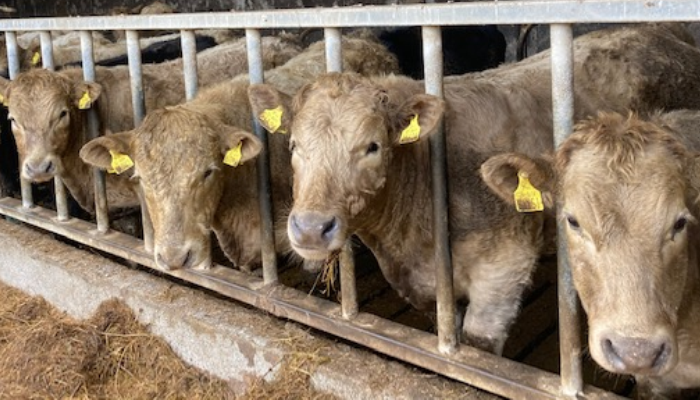Weanling performance: Silage quality is everything

There’s plenty of weanlings around the country that will leave the shed next spring the same weight, or even less, than when they went in.
That was a striking message from James Strain, a Nutritionist with Inishowen Co-op, who joined Catherine Egan on a recent episode of the Beef Edge podcast to re-focus beef farmers’ minds on the importance of winter nutrition.
“The difference in feeding 60 dry matter digestibility (DMD) silage and 70-75 DMD silage is the difference between a weanling going into the shed and doing absolutely nothing or actually losing weight or the difference in an animal gaining 0.5-0.6kg/day,” James attested as to the importance of feeding good quality silage.
Although little can be done about the quality of silage available in pits or bales at this stage of the year, the Donegal-based Nutritionist strongly encouraged farmers to test their silage and to make use of the resulting analysis when formulating feeding plans for weanling and finishing stock this winter.
Silage testing, he explained, is a vital step in winter feeding, as it allows the quality of the silage present in yards to be confirmed.
“Knowing what you have is the building block for trying to make up any ration and knowing what to feed along with the silage to try and gain maximum production,” James Strain explained, before adding: “I couldn’t emphasise enough how important it is to get your silage tested.”
Many farmers enrolled in the Beef Welfare Scheme will be testing silage for the first time this year, and James Strain offered some key tips to simplify examining the reports.
The four key things to look out for, he explained, are DMD (ideally over 70%), dry matter (a happy medium would be 23-28%), a pH of 3.8-4.2%, and a crude protein content of 13%.
The information included in this report will form the foundation as to how much ration is required to be fed to weanlings while housed over the winter months, but away from the quantity, the quality of the ration must also be considered.
James Strain has a preference for rations built on 5-6 quality ingredients, featuring cereals as the main source of energy and soyabean meal as the main source of protein. He encouraged farmers to examine the label; the first ingredient listed will be the highest level of inclusion, while rations containing barley, wheat and maize for energy, and soyabean meal, maize distillers and corn gluten for protein should be preferred, as opposed to rations formulated using filler ingredients such as wheat feed, palm kernel or sunflower meal.
For further insights, listen to the full episode of the Beef Edge podcast below:
More from Teagasc Daily: Reach for the measuring tape before housing stock
More from Teagasc Daily: Getting your SCEP female replacement strategy right
